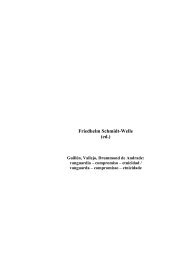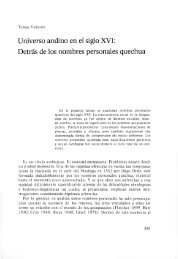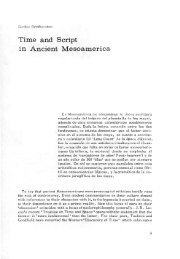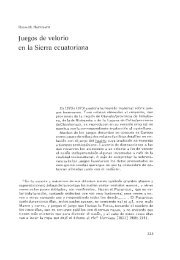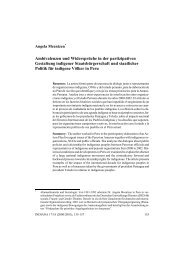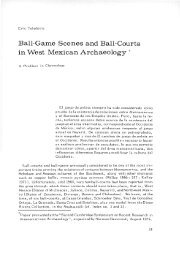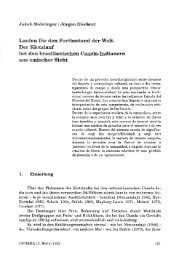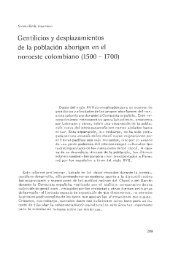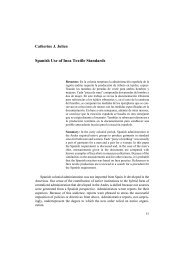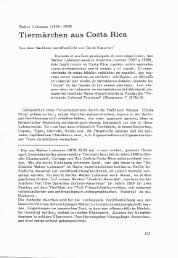o - Ibero-Amerikanisches Institut
o - Ibero-Amerikanisches Institut
o - Ibero-Amerikanisches Institut
Create successful ePaper yourself
Turn your PDF publications into a flip-book with our unique Google optimized e-Paper software.
craft 1851: 386; Fig. 2c). In a single-stanza song 'for beaver hunting and<br />
the Metai Mide' collected by Tanner (1830: 341 - 344), the down-up<br />
opposition occurs in the first and last symbols, a subterranean lodge and<br />
a flying eagle. This text is also notable for the chronology encoded in its<br />
second symbol, which depicts the four 'day-years' familiar from Chusco<br />
and Pontiac. Referring to marks drawn on a fasting figure, on chest (2)<br />
and legs (4), come the words: "Two days must you sit fast, my friend;<br />
four days must you sit fast' (Mallery 1893: 249; Fig. 3). 'Binding' the<br />
legs the four lines mean actually sitting fast for four days but as far<br />
as the candidate's inner devotion goes Tanner's informant assured him<br />
that they are understood simultaneously to mean four years.<br />
A definite link between these Mide texts and the extended alphabetic<br />
narratives of Chusco and Pontiac is provided by Catherine Wabose, an<br />
apostate like Chusco, who described her first solar walk both verbally<br />
and in a pictographic Mide chart (Schoolcraft 1851: 390 - 397). Prepared<br />
by a ritual fast of four days, she sets off on a mysterious path stretching<br />
down between the setting sun and the new moon at the western horizon;<br />
having passed figures equivalent to the full moon and Venus (Fig. 4b, d),<br />
she rises to the heart of the sky, the chmax of the vision, before again<br />
descending, on a snake. The importance of the moon's phases is clear<br />
from Wabose's and one of Little Frenchman's symbols (Fig. 4c) while<br />
moon and Venus, in the posture of the guide Manabozho are similarly<br />
conjoined in single stanza of hunter's pictographs also recorded by Schoolcraft<br />
(1851: 402). The accompanying words read:<br />
WINNEBAGO RITUAL<br />
I am rising (like the sun)<br />
I take the sky, I take the earth (at the horizon)<br />
I walk through the sky (like the moon)<br />
Venus guides me.<br />
As Sioux hving on the southern border of the Mide heartland, the<br />
Winnebago offer insights of their own into the meaning and function of<br />
the solar-walk paradigm. For though he scarcely comments on the fact,<br />
it has paramount importance in Winnebago funeral rituals meticulously<br />
recorded by Paul Radin early in this century (Radin 1923). Here, the<br />
solar walk is unequivocally revealed as the route to true life followed<br />
not just by the initiate shaman but by the soul after death.<br />
Instructed by a great-grandmother figure, the Winnebago soul sets<br />
off on a path that takes him past the underworld fire of the Lucifer-<br />
20



